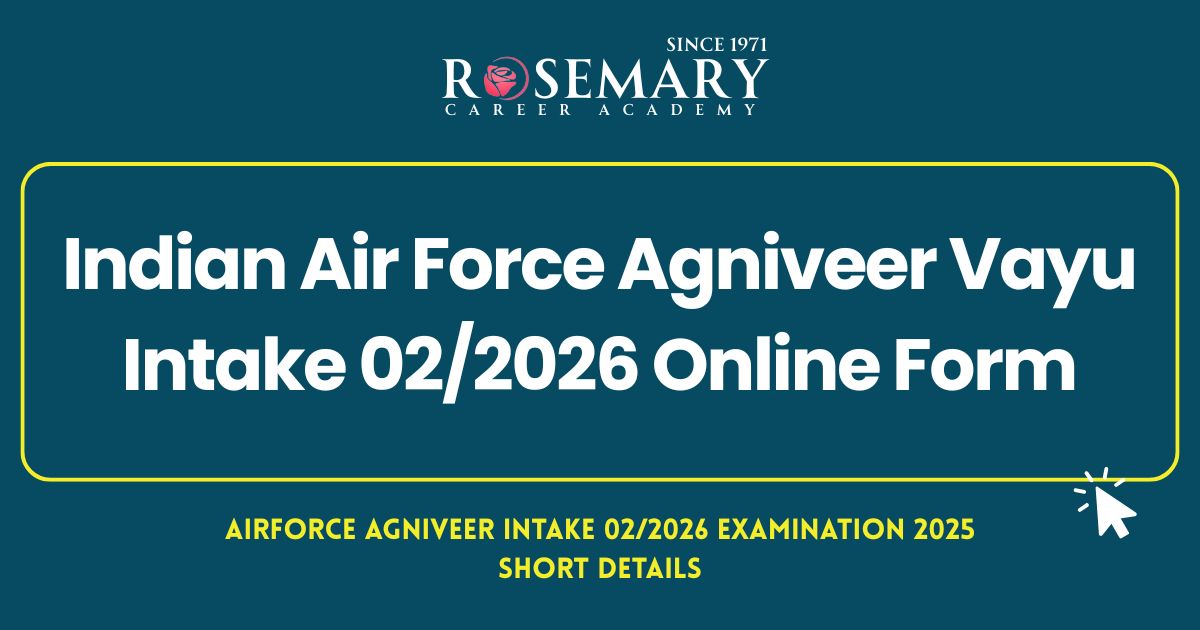NEET Syllabus 2025-26 PDF, Subject Wise Topics and Weightage
Get a detailed overview of the NEET Syllabus 2025-26 syllabus, including subject-wise breakdown for Biology, Physics, and Chemistry. Learn key topics tips to start your preparation for NEET 2026.

NEET Syllabus 2025-26
The NEET exam is a crucial step for students aspiring to become doctors or dentists in India. Each year, lakhs of students prepare for this highly competitive exam. The NEET syllabus outlines the essential topics from Class 11 and Class 12 in Physics, Chemistry, and Biology that students need to study to succeed.
NEET 2026 Syllabus Update:
As of now, the National Testing Agency (NTA) has not officially released the NEET 2026 syllabus. However, there’s no need to worry! The syllabus is expected to be announced around December 2025. Until then, students can continue preparing using the NEET 2025 syllabus, which was identical to that of NEET 2024. Since there have been no changes in the past two years, it is likely that the NEET 2026 syllabus will remain the same.
NEET Syllabus 2026 Overview
The NEET 2026 syllabus consists of three core subjects — Physics, Chemistry, and Biology — based on the Class 11 and Class 12 NCERT textbooks. It is carefully structured to assess students’ understanding of key scientific concepts and their application in real-life scenarios.
📘 NEET 2026 Syllabus at a Glance:
| Parameter | Details |
|---|---|
| Official Release | December 2025 (Expected) |
| Authority | National Testing Agency (NTA) |
| Syllabus Availability | NTA’s official website |
| Document Format | |
| Key Sections | Physics, Chemistry, Biology |
| Applicability | Mandatory for all NEET 2026 aspirants |
NEET Syllabus 2026 - Subjects Wise Breakdown
The NEET 2026 syllabus offers a comprehensive breakdown of all three major subjects in the NEET UG Exam — Biology, Physics, and Chemistry. Each subject is crucial in establishing a solid foundation for medical entrance preparation. Since the official syllabus is expected to be released by December 2025, students are advised to continue preparing based on the NEET 2025 syllabus, which followed the same structure as previous years.
| 🧬 Biology Syllabus | ⚛️ Physics Syllabus | 🧪 Chemistry Syllabus |
|---|---|---|
| Diversity of Living Organisms | Physical World and Measurement | Some Basic Concepts of Chemistry |
| Structural Organization in Plants & Animals | Kinematics | Structure of Atom |
| Cell Structure and Function | Laws of Motion | Classification of Elements and Periodicity in Properties |
| Plant Physiology | Work, Energy, and Power | Chemical Bonding and Molecular Structure |
| Human Physiology | Rotational Motion | States of Matter: Gases and Liquids |
| Reproduction | Gravitation | Thermodynamics |
| Genetics & Evolution | Properties of Solids and Liquids | Equilibrium |
| Biology and Human Welfare | Thermodynamics | Redox Reactions |
| Biotechnology and Its Applications | Kinetic Theory of Gases | P-Block Elements |
| Ecology and Environment | Oscillations and Waves | d- and f-Block Elements |
| Electrostatics | Coordination Compounds | |
| Current Electricity | Purification and Characterisation of Organic Compounds | |
| Magnetic Effects of Current and Magnetism | Some Basic Principles of Organic Chemistry | |
| Electromagnetic Induction and AC | Hydrocarbons | |
| Electromagnetic Waves | Organic Compounds Containing Halogens | |
| Optics | Organic Compounds Containing Oxygen | |
| Dual Nature of Matter and Radiation | Organic Compounds Containing Nitrogen | |
| Atoms and Nuclei | Biomolecules | |
| Electronic Devices | Principles Related to Practical Chemistry | |
| Experimental Skills |
NEET Syllabus 2026 for Biology
Biology is the most important section in NEET exam. It carries 50% weightage of the entire paper (90 questions). The questions come from both Botany and Zoology.
| Class | Unit Name | Topics Covered |
|---|---|---|
| Class 11 | 1. Diversity of Living Organisms | – What is Living? – Biodiversity & Classification – Taxonomy, Systematics, Binomial Nomenclature – Five Kingdom Classification (Monera, Protista, Fungi) – Lichens, Viruses, Viroids – Plant Groups: Algae to Gymnosperms – Animal Groups: Non-chordates & chordates (features + examples) |
| 2. Structural Organization in Plants & Animals | – Morphology & Modifications of Plants – Tissues (Plant + Animal) – Anatomy of Root, Stem, Leaf, Flower, Seed – Flower Families: Malvaceae, Cruciferae, etc. – Digestive, Respiratory, Nervous, Circulatory & Reproductive System in Frog (Brief) | |
| 3. Cell Structure and Function | – Cell Theory, Prokaryotic & Eukaryotic Cells – Cell Organelles (ER, Golgi, Mitochondria, etc.) – Biomolecules: Carbs, Proteins, Lipids, Nucleic Acids – Enzymes & their Actions – Cell Division: Mitosis & Meiosis | |
| 4. Plant Physiology | – Photosynthesis (Light + Dark Phases) – Respiration: Glycolysis to ETC – Plant Growth & Hormones (Auxin, ABA, etc.) | |
| 5. Human Physiology | – Breathing & Respiration in Humans – Blood Circulation & Disorders – Excretory System & Regulation – Muscles, Movement & Skeletal Disorders – Nervous System (Neuron, Brain) – Endocrine Glands (Hormones & Diseases) |
| Class | Unit Name | Topics Covered (Easy Format) |
|---|---|---|
| Class 12 | 6. Reproduction | – Sexual Reproduction in Plants – Double Fertilization, Seed & Fruit Formation – Human Reproductive System – Menstrual Cycle, Pregnancy, Lactation – Reproductive Health (STD, MTP, IVF etc.) |
| 7. Genetics & Evolution | – Mendel’s Laws & Variations – Blood Groups, Sex-linked Traits – DNA/RNA Structure, Replication, Transcription – Genetic Code, Translation – Human Genome Project – Evolution Theory, Natural Selection, Hardy-Weinberg, Human Evolution | |
| 8. Biology in Human Welfare | – Diseases: Malaria, Typhoid, Dengue, HIV, etc. – Immunity, Vaccines – Cancer, Drugs, Alcohol, Tobacco Abuse – Microbes in Daily Life: Food, Industry, Sewage, Biocontrol | |
| 9. Biotechnology & Its Applications | – Genetic Engineering (rDNA Technology) – Applications in Health & Agriculture – Insulin, GM Crops, Transgenic Animals – Biopiracy, Patents & Biosafety | |
| 10. Ecology & Environment | – Ecosystem Structure, Energy Flow – Population Attributes (Growth, Age) – Biodiversity: Importance, Threats & Conservation – Protected Areas: National Parks, Sanctuaries, Red Data Book |
NEET Syllabus 2026 for Physics
| Class | Unit No. & Name | Unit Topics |
|---|---|---|
| 11 | UNIT I: Physics And Measurement | Units of measurements, System of Units, SI Units, Fundamental and derived units, Least count, Significant figures, Errors in measurements, Dimensions of Physical quantities, Dimensional analysis and its applications. |
| UNIT 2: Kinematics | Frame of reference, Motion in a straight line, Position-time graph, Speed and velocity (uniform and non-uniform motion), Average speed and instantaneous velocity, Uniformly accelerated motion, Velocity-time & position-time graphs, Scalars and Vectors, Vector addition and subtraction, Scalar and vector products, Unit Vector, Resolution of Vector, Relative Velocity, Motion in a plane, Projectile motion, Uniform circular motion. | |
| UNIT 3: Laws Of Motion | Force and inertia, Newton’s First Law of motion, Momentum, Newton’s Second Law of motion, Impulse, Newton’s Third Law of motion, Law of conservation of linear momentum and applications, Equilibrium of concurrent forces, Static and kinetic friction, Laws of friction, Rolling friction, Dynamics of uniform circular motion, Centripetal force and applications (vehicle on level and banked road). | |
| UNIT 4: Work, Energy, and Power | Work done by constant and variable force, Kinetic and potential energies, Work-energy theorem, Power, Potential energy of spring, Conservation of mechanical energy, Conservative and non-conservative forces, Motion in vertical circle, Elastic and inelastic collisions (one and two dimensions). | |
| UNIT 5: Rotational Motion | Centre of mass (two-particle system and rigid body), Basic concepts of rotational motion, Moment of force, Torque, Angular momentum, Conservation of angular momentum and applications, Moment of inertia, Radius of gyration, Values for simple geometrical objects, Parallel and perpendicular axes theorems, Equilibrium of rigid bodies, Rigid body rotation and equations of rotational motion, Comparison of linear and rotational motions. | |
| UNIT 6: Gravitation | Universal law of gravitation, Acceleration due to gravity and its variation with altitude and depth, Kepler’s laws of planetary motion, Gravitational potential energy, Gravitational potential, Escape velocity, Motion of satellites (orbital velocity, time period, energy). | |
| UNIT 7: Properties of Solids and Liquids | Elastic behavior, Stress-strain relationship, Hooke’s law, Young’s modulus, Bulk modulus, Modulus of rigidity, Pressure due to fluid column, Pascal’s law and applications, Effect of gravity on fluid pressure, Viscosity, Stokes’ law, Terminal velocity, Streamline and turbulent flow, Critical velocity, Bernoulli’s principle and applications, Surface energy and surface tension, Angle of contact, Excess pressure across curved surface, Applications (drops, bubbles, capillary rise), Heat, Temperature, Thermal expansion, Specific heat capacity, Calorimetry, Change of state, Latent heat, Heat transfer (conduction, convection, radiation). | |
| UNIT 8: Thermodynamics | Thermal equilibrium, Zeroth law of thermodynamics, Concept of temperature, Heat, Work, Internal energy, First law of thermodynamics, Isothermal and adiabatic processes, Second law of thermodynamics, Reversible and irreversible processes. | |
| UNIT 9: Kinetic Theory of Gases | Equation of state of perfect gas, Work done on compressing a gas, Kinetic theory of gases (assumptions), Concept of pressure, Kinetic interpretation of temperature, RMS speed, Degrees of freedom, Law of equipartition of energy and applications, Mean free path, Avogadro’s number. | |
| UNIT 10: Oscillation and Waves | Oscillations and periodic motion (time period, frequency, displacement), Simple harmonic motion (SHM) and equation, Phase, Oscillations of spring (restoring force, force constant), Energy in SHM (kinetic and potential), Simple pendulum (time period expression derivation), Wave motion (longitudinal and transverse), Speed of traveling wave, Displacement relation for progressive wave, Principle of superposition, Reflection of waves, Standing waves in strings and organ pipes, Fundamental mode and harmonics, Beats. | |
| 12 | UNIT 11: Electrostatics | Electric charges and conservation, Coulomb’s law, Forces between point charges and multiple charges, Superposition principle, Continuous charge distribution, Electric field (due to point charge and dipole), Electric field lines, Torque on dipole, Electric flux, Gauss’s law and applications (infinitely long charged wire, charged plane, charged spherical shell), Electric potential, Equipotential surfaces, Electrical potential energy of system of charges and dipole, Conductors and insulators, Dielectrics and electric polarization, Capacitors and capacitance, Combination of capacitors in series and parallel, Capacitance of parallel plate capacitor with and without dielectric, Energy stored in capacitor. |
| UNIT 12: Current Electricity | Electric current, Drift velocity, Mobility, Ohm’s law, Electrical resistance, V-I characteristics of ohmic and non-ohmic conductors, Electrical energy and power, Electrical resistivity and conductivity, Series and parallel resistors, Temperature dependence of resistance, Internal resistance, EMF of cell, Combination of cells, Kirchhoff’s laws, Wheatstone bridge, Meter bridge. | |
| UNIT 13: Magnetic Effects of Current and Magnetism | Biot-Savart law and application to circular loop, Ampere’s law and applications (long wire, solenoid), Force on moving charge in magnetic and electric fields, Force on current-carrying conductor, Force between parallel currents, Ampere definition, Torque on current loop in magnetic field, Moving coil galvanometer (sensitivity and conversion to ammeter/voltmeter), Current loop as magnetic dipole, Bar magnet as solenoid, Magnetic field lines, Magnetic field due to dipole, Torque on magnetic dipole, Para-, dia- and ferromagnetic substances, Effect of temperature on magnetic properties. | |
| UNIT 14: Electromagnetic Induction and Alternating Currents | Faraday’s law, Induced EMF and current, Lenz’s law, Eddy currents, Self and mutual inductance, Alternating currents (AC), Peak and RMS values, Reactance and impedance, LCR series circuit, Resonance, Power in AC circuits, Wattless current, AC generator, Transformer. | |
| UNIT 15: Electromagnetic Waves | Displacement current, Electromagnetic waves and their characteristics, Transverse nature, Electromagnetic spectrum (radio, microwave, infrared, visible, ultraviolet, X-rays, gamma rays), Applications. | |
| UNIT 16: Optics | Reflection of light, Spherical mirrors, Mirror formula, Refraction at plane and spherical surfaces, Thin lens formula and lens maker formula, Total internal reflection and applications, Magnification, Power of lens, Combination of lenses, Refraction through prism, Microscope and astronomical telescope (reflecting and refracting), Wave optics (wavefront, Huygens’ principle), Laws of reflection and refraction (Huygens’ principle), Interference (Young’s double slit), Diffraction (single slit), Polarization, Brewster’s law, Uses of plane polarized light, Polaroid. | |
| UNIT 17: Dual Nature of Matter and Radiation | Dual nature of radiation, Photoelectric effect (Hertz and Lenard observations), Einstein’s photoelectric equation, Particle nature of light, Matter waves, Wave nature of particle, de Broglie relation. | |
| UNIT 18: Atoms and Nuclei | Alpha particle scattering, Rutherford model, Bohr model, Hydrogen spectrum, Composition and size of nucleus, Atomic masses, Mass-energy relation, Mass defect, Binding energy per nucleon, Nuclear fission and fusion. | |
| UNIT 19: Electronic Devices | Semiconductors, Semiconductor diode (I-V characteristics), Diode as rectifier, LED, Photodiode, Solar cell, Zener diode and voltage regulator, Logic gates (OR, AND, NOT, NAND, NOR). | |
| UNIT 20: Experimental Skills | Vernier calipers, Screw gauge, Simple pendulum energy dissipation, Metre scale principle of moments, Young’s modulus, Surface tension by capillary rise, Coefficient of viscosity by terminal velocity, Speed of sound by resonance tube, Specific heat capacity by method of mixtures, Resistivity using meter bridge and Ohm’s law, Galvanometer resistance and figure of merit, Focal length (convex mirror, concave mirror, convex lens) by parallax method, Angle of deviation for prism, Refractive index of glass slab, P-N junction diode characteristics, Zener diode characteristics, Identification of diode, LED, resistor, capacitor from mixed collection. |
NEET Syllabus 2026 for Chemistry
NEET 2026 Syllabus for Inorganic Chemistry
The NEET 2026 syllabus for Inorganic Chemistry includes the study of periodic properties, coordination compounds, and essential metal and non-metal elements. Detailed knowledge of electronic configurations and chemical bonding will be crucial for tackling this section effectively.
| Class | Unit No. & Name | Topics Covered |
|---|---|---|
| 11 | UNIT 9: Classification of Elements and Periodicity in Properties | Modern periodic law and the current periodic table; s, p, d, and f-block elements; periodic trends — atomic and ionic radii, ionization enthalpy, electron gain enthalpy, valence, oxidation states, chemical reactivity. |
| 12 | UNIT 10: P-Block Elements | General introduction; electronic configuration; general trends in physical and chemical properties; unique behavior of the first element of each group; Group 13 to Group 18 elements. |
| UNIT 11: d- and f-Block Elements | General introduction, electronic configurations, occurrence, characteristics of transition elements; trends in physical properties, ionization enthalpy, oxidation states, atomic radii, color, catalytic behavior, magnetic properties, complex formation; preparation, properties, uses of K₂Cr₂O₇ and KMnO₄; lanthanoids and actinoids — electronic configurations, oxidation states, lanthanoid contraction. | |
| UNIT 12: Coordination Compounds | Introduction to coordination compounds; Werner’s theory; ligands, coordination number, denticity, chelation; IUPAC nomenclature of mononuclear coordination compounds; isomerism; bonding — valence bond theory and basics of crystal field theory; color and magnetic properties; importance in qualitative analysis, metal extraction, and biological systems. |
Chemistry is divided into Physical, Inorganic, and Organic Chemistry. All three parts are equally important in NEET exam.
NEET 2026 Syllabus for Physical Chemistry
The NEET 2026 Syllabus Physical Chemistry includes fundamental concepts such as thermodynamics, kinetics, and equilibrium. Students should focus on mastering numeric calculations and understanding the physical basis of chemical reactions to perform well in this section.
| Class | Unit No. & Name | Topics Covered |
|---|---|---|
| 11 | UNIT 1: Some Basic Concepts of Chemistry | Matter and its nature, Dalton’s atomic theory, laws of chemical combination, concept of elements, atoms, and molecules, atomic and molecular masses, mole concept and molar mass, percentage composition, empirical and molecular formulae, chemical reactions, stoichiometry. |
| UNIT 2: Structure of Atom | Discovery of electron, proton, and neutron, atomic number, isotopes and isobars, Thompson’s model and its limitations, Rutherford’s model and its limitations, Bohr’s model and its limitations, shells and subshells, dual nature of matter and light, de Broglie’s relationship, Heisenberg uncertainty principle, orbitals, quantum numbers, shapes of s, p, d orbitals, Aufbau principle, Pauli exclusion principle, Hund’s rule, electronic configuration, stability of half-filled and filled orbitals. | |
| UNIT 3: Classification of Elements and Periodicity in Properties | Significance of classification, development of periodic table, modern periodic law, periodic trends — atomic radii, ionic radii, ionization enthalpy, electron gain enthalpy, electronegativity, valence. | |
| 12 | UNIT 4: Chemical Bonding and Molecular Structure | Valence electrons, ionic and covalent bonds, bond parameters, Lewis structure, polar character of covalent bond, covalent character of ionic bond, valence bond theory, resonance, molecular geometry, VSEPR theory, hybridization (s, p, d orbitals), molecular orbital theory (homonuclear diatomic molecules, qualitative), hydrogen bonding. |
| UNIT 5: States of Matter: Gases and Liquids | Three states of matter, intermolecular interactions, types of bonding, melting and boiling points, gas laws — Boyle’s, Charles’s, Gay-Lussac’s, Avogadro’s law, ideal gas equation, kinetic energy and molecular speeds (basic idea), deviation from ideal behavior, liquefaction of gases, critical temperature; Liquid state — vapour pressure, viscosity, surface tension (qualitative). | |
| UNIT 6: Thermodynamics | Concepts of system, types of systems, surroundings, work, heat, energy, extensive and intensive properties, state functions, first law of thermodynamics — internal energy and enthalpy, heat capacity, Hess’s law, enthalpy of various processes (bond dissociation, combustion, formation, etc.), entropy (introduction), second law of thermodynamics, Gibbs energy, spontaneity criteria, third law (brief). | |
| UNIT 7: Equilibrium | Equilibrium in physical and chemical processes, dynamic equilibrium, law of mass action, equilibrium constant, factors affecting equilibrium (Le Chatelier’s principle), ionic equilibrium — ionization of acids/bases, strong/weak electrolytes, degree of ionization, polybasic acids, pH concept, hydrolysis of salts (basic), buffer solutions, Henderson equation, solubility product, common ion effect (examples). | |
| UNIT 8: Redox Reactions | Concept of oxidation and reduction, redox reactions, oxidation number, balancing redox reactions by electron transfer and oxidation number change, applications of redox reactions. |
NEET 2026 Syllabus for Organic Chemistry
The 2026 syllabus for Organic Chemistry covers a wide range of topics including hydrocarbons, biomolecules, and important organic reactions such as nucleophilic substitution and elimination. Students need to be proficient in reaction mechanisms and functional group transformations to score well.
| Unit No. & Name | Topics Covered |
|---|---|
| UNIT 13: Purification and Characterisation of Organic Compounds | Purification methods: crystallization, sublimation, chromatography, distillation, differential extraction; qualitative and quantitative analysis including detection of N, S, P, halogens; empirical and molecular formula calculations. |
| UNIT 14: Some Basic Principles of Organic Chemistry | Tetra-valency of carbon, hybridization, classification based on functional groups, isomerism, nomenclature; types of organic reactions: substitution, addition, elimination, rearrangement; electronic effects: inductive, electromeric, resonance, hyperconjugation. |
| UNIT 15: Hydrocarbons | Classification and isomerism; Alkanes, Alkenes, Alkynes — structure, properties, reactions; Aromatic hydrocarbons — structure, aromaticity, electrophilic substitution reactions. |
| UNIT 16: Organic Compounds Containing Halogens | Preparation, properties, reactions of haloalkanes and haloarenes; environmental effects of compounds like chloroform and DDT. |
| UNIT 17: Organic Compounds Containing Oxygen | Properties and reactions of alcohols, phenols, ethers, aldehydes, ketones, carboxylic acids; important organic reactions such as nucleophilic addition and condensation. |
| UNIT 18: Organic Compounds Containing Nitrogen | Amines and diazonium salts — preparation, properties, reactions, uses; importance in synthetic organic chemistry. |
| UNIT 19: Biomolecules | Classification and functions of carbohydrates, proteins, vitamins, nucleic acids; structure and function in biological processes. |
| UNIT 20: Principles Related to Practical Chemistry | Detection of elements and functional groups in organic compounds; principles of preparation of specific inorganic and organic compounds; qualitative and quantitative analysis including titrimetric and gravimetric methods. |
Tips to Cover NEET Syllabus 2026
Covering the NEET 2026 syllabus requires a focused and balanced approach. Here are key strategies to help you stay on track
Follow NCERT Thoroughly: Use Class 11 and 12 NCERT books as your primary source, especially for Biology and Chemistry.
Plan Weekly Targets: Break the syllabus into weekly goals for consistent progress and timely completion.
Practice Daily MCQs: Strengthen concepts by solving chapter-wise questions regularly.
Focus on Important Chapters: Prioritize high-weightage topics but don’t skip the rest.
Revise Regularly: Keep revisiting older chapters to ensure long-term retention.
Clear Doubts Early: Address difficult topics quickly through teachers or online platforms.
Balance All Subjects: Allocate time fairly to Biology, Chemistry, and Physic





